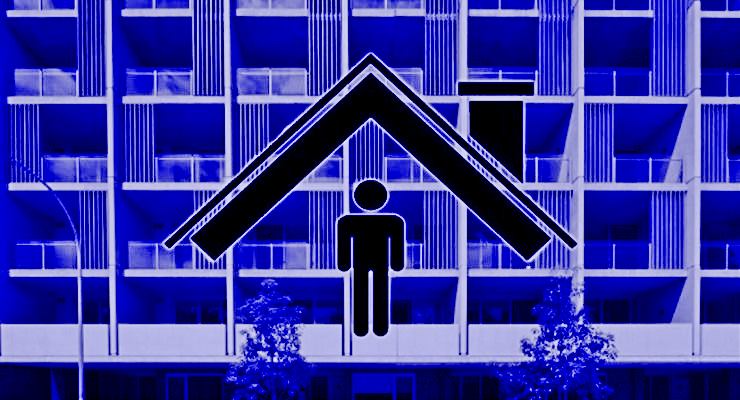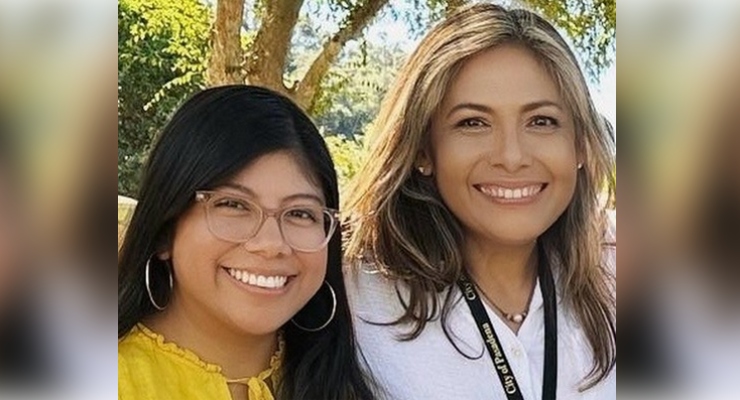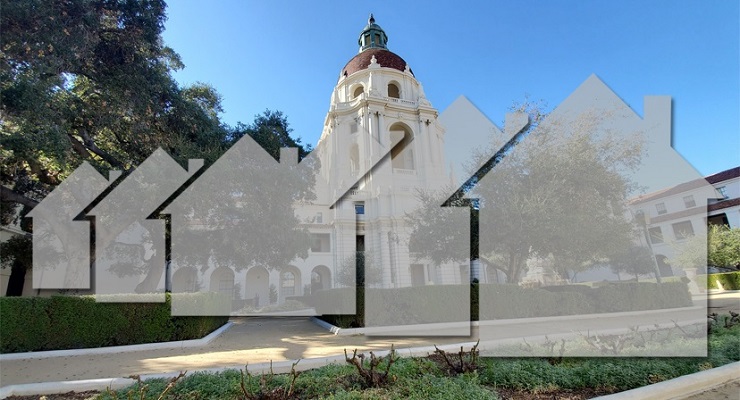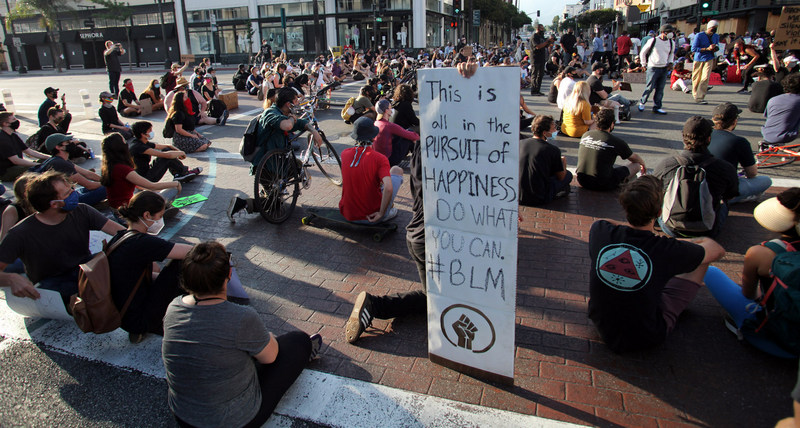
Hundreds of demonstrators organized by Pasadena's Black Lives Matter, sit on the corner of Fair Oaks Ave and Colorado Blvd., as they protest the murder of George Floyd in Old Pasadena on Thursday, June 4, 2020. (Photo by James Carbone)
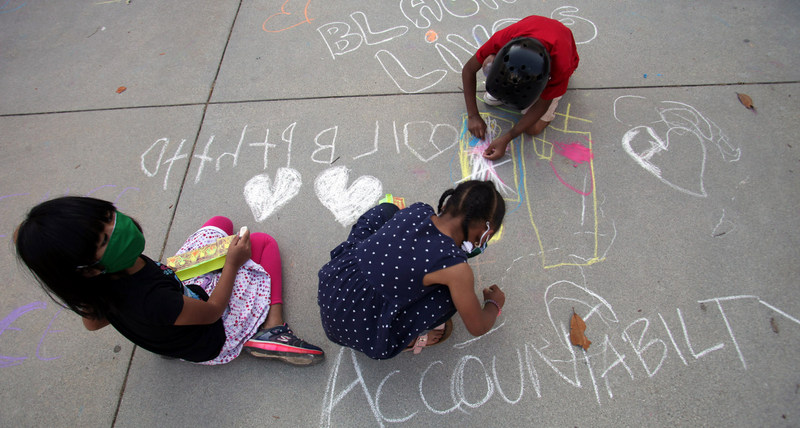
Children draw with chalk on front the side-walk of the Pasadena Police Department as a demonstration takes place protesting the murder of George Floyd at the Pasadena Police Station in Pasadena on Thursday, June 4, 2020. (Photo by James Carbone)
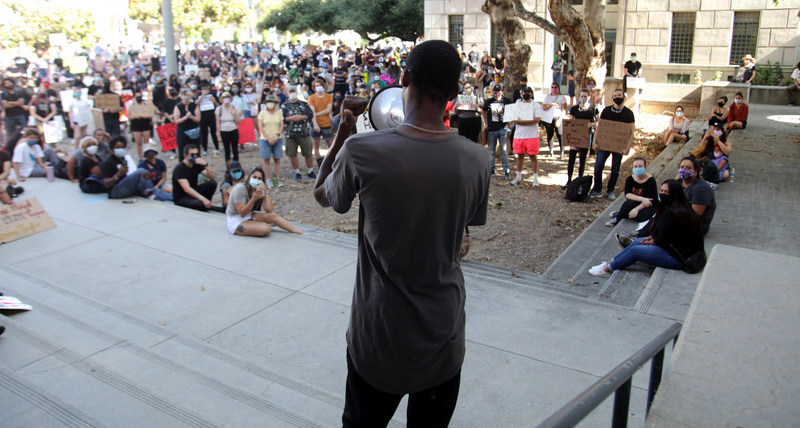
A young man talks about his experience about being a black and living in Los Angeles during a peaceful demonstration at the Pasadena Police Department in Pasadena on Thursday, June 4, 2020. (Photo by James Carbone)
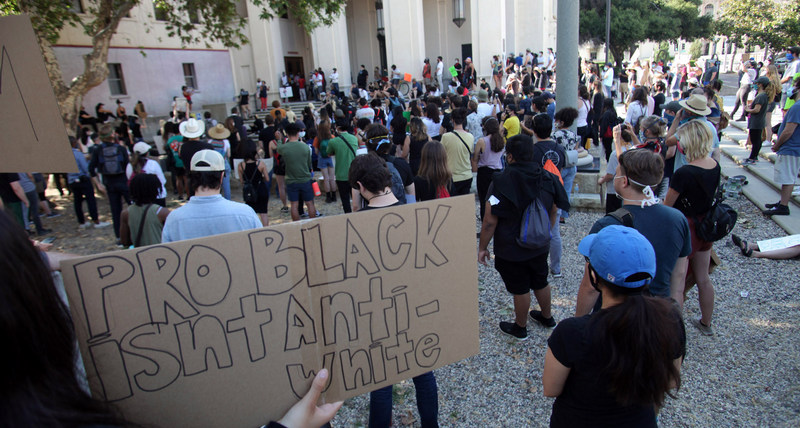
Hundreds of people gather at the Pasadena Police Department to protest the murder of George Floyd in Pasadena on Thursday, June 4, 2020. (Photo by James Carbone)
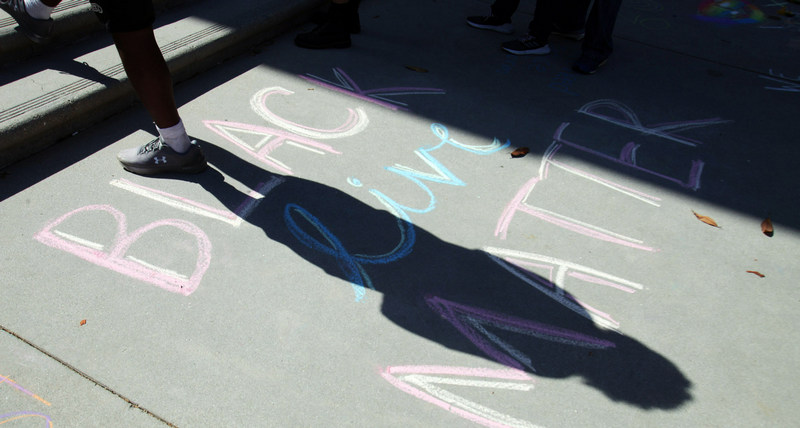
Black Lives Matter is written in chalk on the steps of the Pasadena Police Department as demonstrators protest the murder of George Floyd in Pasadena on Thursday, June 4, 2020. (Photo by James Carbone)
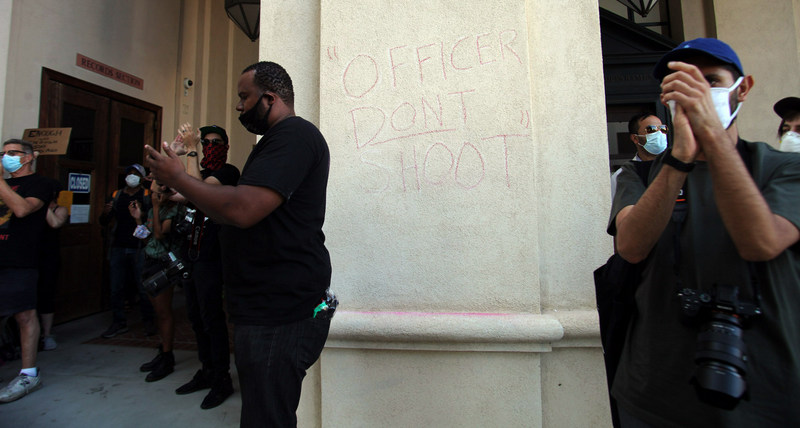
Hundreds of people gather at the Pasadena Police Department to protest the murder of George Floyd in Pasadena on Thursday, June 4, 2020. (Photo by James Carbone)
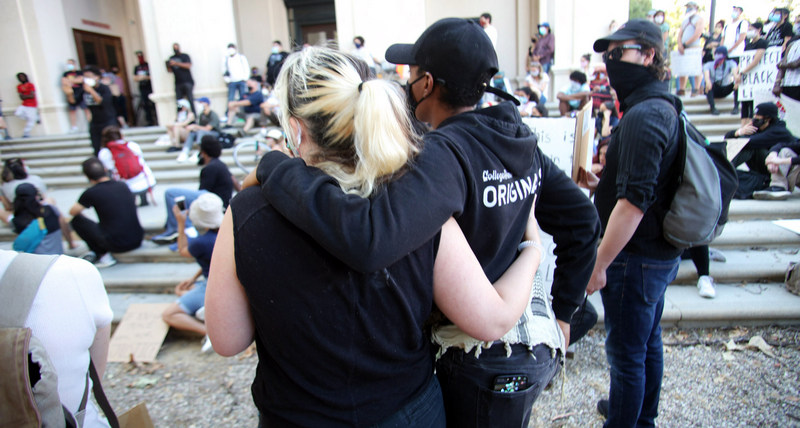
Hundreds of people gather at the Pasadena Police Department to protest the murder of George Floyd in Pasadena on Thursday, June 4, 2020. (Photo by James Carbone)
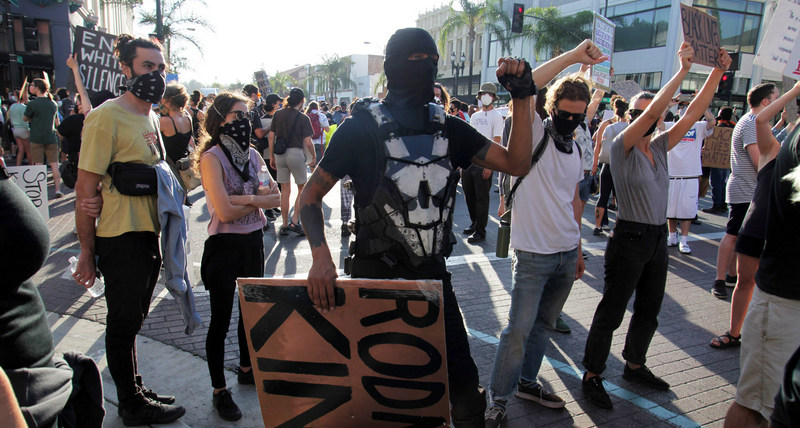
Hundreds of demonstrators organized by Pasadena's occupy the corner of Fair Oaks Ave and Colorado Blvd as they protest the murder of George Floyd in Old Pasadena, on Thursday, June 4, 2020. (Photo by James Carbone)
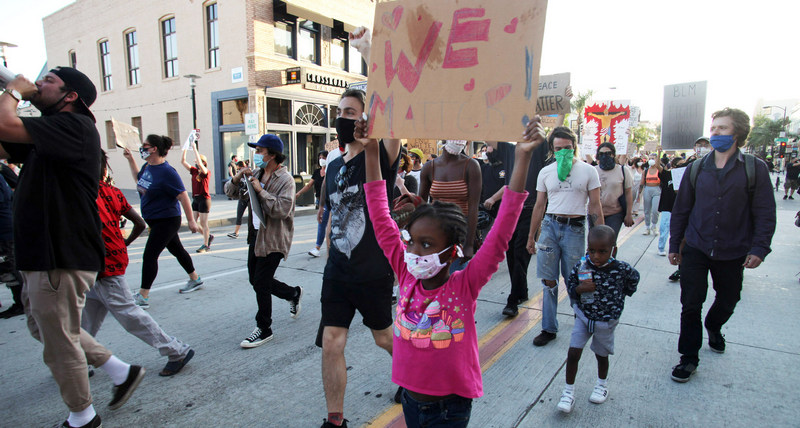
Hundreds of demonstrators organized by Pasadena's Black Lives Matter walk along Colorado Blvd as they protest the murder of George Floyd in Old Pasadena on Thursday, June 4, 2020. (Photo by James Carbone)
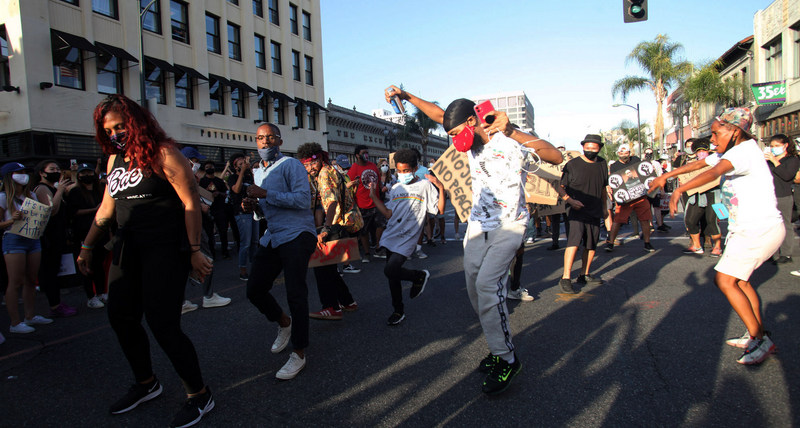
Demonstrators organized by Pasadena's Black Lives Matter dance on the corner of Fair Oaks Ave and Colorado Blvd. as they protest the murder of George Floyd on Old Pasadena, Thursday, June 4, 2020. (Photo by James Carbone)
Pasadena’s fourth major protest of the week took a new tack Thursday as organizers led a group of marchers from Pasadena Police headquarters to Old Pasadena, and then east on Colorado, and north on Los Robles into the residential neighborhoods of Northwest Pasadena.
A crowd of approximately 200 mostly young, boisterous but non-violent protesters—which grew through the afternoon—gathered at police headquarters at about 4 p.m. The group heard a wide range of emotional and intense speeches from participants, speeches which ranged from angry to heartbreaking, to enlightening.
Although the name of George Floyd was evoked throughout the afternoon and evening, many of the participants emphasized police-involved shootings in Pasadena, bringing up Kedrec McDade, JR Richardson, and others, who died in officer-involved incidents.
Denise Valentine, who moved to Pasadena from Chicago, half-jokingly told the young, diverse crowd, “I’ll be your Black friend, but I won’t be your only Black friend. You better have other ones.” Then, concluding her emotional speech, she said, “I just want to say that I see you, and I am so glad you finally see me.”
A number of residents spoke of growing up in fear of the police, including one speaker who said, “I should not be nervous about going to my friend’s house late at night, or afraid to go up to a cop, and say, ‘Hey, I need your help.”
Teacher Andre Henry also delivered an insightful short sociology lesson, which he said, detailed the structure of racism in America.
Noting the roof of the police building headquarters, he said, “That rooftop represents racism in this country.” Pointing out the pillars of the building, Henry said those pillars represent insitutitions which support racism—the media, the educational system, evangelical churches, and politicians.
“There are a bunch of institutions in this country that keep the roof (of racism) up!,” he told the crowd. He urged the crowd to take action in response, as previous generations had done with “Jim Crow” laws which once ruled the Southern US.
“We have to do the same,” he said. “Non-violent struggle. And it’s not what most white people think, which is sitting on your a–, and saying that you don’t believe in violence. That is not non-violent struggle.”
“Non-violent struggle is a way to conduct warfare,” said Henry. “It is a weapons system to remove the pillars of power without hurting anybody. So, if it’s warfare, you have to be intentional about it,” he said, urging the crowd to work towards meaningful change.
The crowd also cheered and shouted and chanted for nine minutes—as they have done in previous demonstrations—marking the nine minutes that Minneapolis police officer Derek Chauvin held his knee on the neck of George Floyd, causing his death.
Following more than a dozen speakers, the organizers told the crowd, now numbering about 600-700, that they would march to Old Pasadena, and “shut it down,” and disrupt businesses which were just beginning to re-open.
Because of the COVID-19 shutdown, however, traffic was sparse in Old Pasadena, and few shops were open. Police responded immediately to the marchers, blocking streets surrounding the intersection of Fair Oaks and Colorado, eliminating the possibility that motorists would disrupt the protest. Other than the motorcycle officers, police presence was minimal throughout the demonstrations and marches.
When the demonstrators arrived at the intersection, they formed a large human square and danced the Electric Slide to James Brown’s ‘70s anthem, “The Big Payback.” By then the mood was one of joy and release, but later protesters sat quietly in the intersection as a tribute to Floyd.
While at least one organizer vowed to stay in the intersection “as long as it takes,” and had expected a dispersal order from police, no officers ever arrived, and by 7 p.m., the demonstrators left the intersection and headed east on Colorado. By then, half the group had left. Motorcycle officers sped off ahead and blocked off streets, clearing the path for the marchers.
The remaining group of approximately 150 marchers marched on the empty streets to Los Robles and Orange Grove, where they once again sat in the intersection, in a quiet tribute to Floyd and other victims. Once in the residential neighborhoods of Northwest Pasadena, with nearby motorists honking in support, marchers urged residents to come out of their homes to join the march. While few did, neighbors walked out on to their porches, as the marchers were met with smiles and raised fists throughout the march.
On Orange Grove, the marchers stopped at the former homes of JR Richardson, who died in police custody in October of 2017, and Kedrec McDade, who died in a officer-involved shooting in March of 2012.
Following nearly four and a half hours of protesting and marching, the demonstrators, who had intended to visit the home of Mayor Terry Tornek, eventually dispersed in and around Northwest Pasadena.
Pasadena police reported no arrests related to the protests.




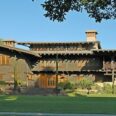


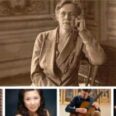

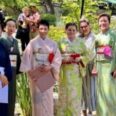


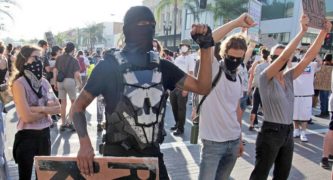

 0 comments
0 comments
